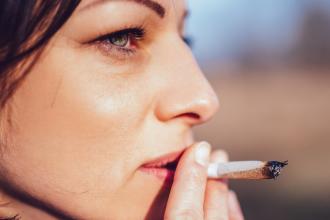Calls to BC Poison Control on 4/20: A case-only analysis
Every 20 April, thousands of Canadians celebrate or advocate cannabis use by attending public events or consuming cannabis in private.
Every 20 April, thousands of Canadians celebrate or advocate cannabis use by attending public events or consuming cannabis in private. Cannabis-themed celebrations on this date, known as 4/20, have been held since the 1970s when the phenomenon emerged from California’s cannabis subculture.[1]
Vancouver hosts a large 4/20 event, most recently held at Sunset Beach on English Bay. Crowds have grown from around 10 000 people in 2012 to 40 000 in 2017.[2,3]
After noticing a high volume of cannabis-related calls on 4/20 to the BC Drug and Poison Information Centre (DPIC), we sought to describe 4/20 cannabis-exposure callers and assess how they differ from callers on other days of the year. We hypothesized that 4/20, as a mainstream event, would attract first-time or occasional cannabis users. To explore this we conducted a case-only analysis of poison centre call data from 2013–2016, a method that quantifies the degree to which individual and situational factors modify the risk of a particular outcome.
We examined the characteristics of cannabis-exposure callers that might make them more likely to call on 4/20 compared with other days. If a characteristic increases this risk, we would expect a larger portion of 4/20 cannabis callers to have the condition. Characteristics considered included age, sex, cannabis formulation, caller location, and cannabis-use history. Data were extracted from mandatory coded fields and case histories in DPIC’s call database.
We defined event cases as callers to the poison centre on 4/20 or the day after reporting cannabis exposure. Comparison cases were ones reporting cannabis exposures on all other days of the year, excluding days when cannabis call volume exceeded the daily average 99th percentile. Cases reporting the use of illicit substances other than cannabis use were excluded.
We identified 19 event and 721 comparison cases from 2013–2016. Univariate regression produced interaction odds ratios for the odds of being a cannabis-exposure call on 4/20 among those with certain characteristics compared to those without (Table). The 4/20 callers were more likely to have consumed edible cannabis products than other formulations, and more often called from the Vancouver Coastal Health Authority region than elsewhere in BC (Figure). Controlling for location, the odds of being a 4/20 cannabis caller were 3.7 times higher among consumers of edible marijuana products (95% CI, 1.39–11.82).
It was not surprising that 4/20 cannabis users primarily call from Vancouver and consume edibles, considering the large event in Vancouver at which edible products are promoted and sold. Ingesting cannabis produces delayed symptoms, often more severe than those experienced from inhalation. Delayed effects and lack of dosage regulations contribute to a phenomenon observed in poison centre calls in which novice users consume successive servings of edible cannabis product while waiting for the drug’s psychoactive effects to begin.
It was surprising that 4/20 calls from first-time users or from certain age groups were not more frequent. It is not mandatory for poison centre staff to ask callers about cannabis-use history, which may explain why first-time user status did not stand out.
Results highlight concerns for edible cannabis products; 4/20 event messaging, product packaging, and health providers should warn users about the particular effects of edibles. While edibles are not included in Canada’s 2018 cannabis legislation, they are of concern for population health.
—Emma Cumming, MSc
Field Epidemiologist, Public Health Agency of Canada
—Tom Kosatsky, MD
BCCDC
hidden
This article is the opinion of the BC Centre for Disease Control and has not been peer reviewed by the BCMJ Editorial Board.
References
- Brown S. Vancouver 4/20 revellers light up Sunset Beach. Vancouver Sun. Last modified 21 April 2017. http://vancouversun.com/news/local-news/vancouver-420-revellers-light-up....
- CBC News British Columbia. Annual ‘4/20’ pot event celebrated in Vancouver. Last modified 20 April 2012. www.cbc.ca/news/canada/british-columbia/annual-4-20-pot-event-celebrated....
- McKinley J. Marijuana advocates point to signs of change. The New York Times. Last modified 19 April 2009. www.nytimes.com/2009/04/20/us/20marijuana.html.

